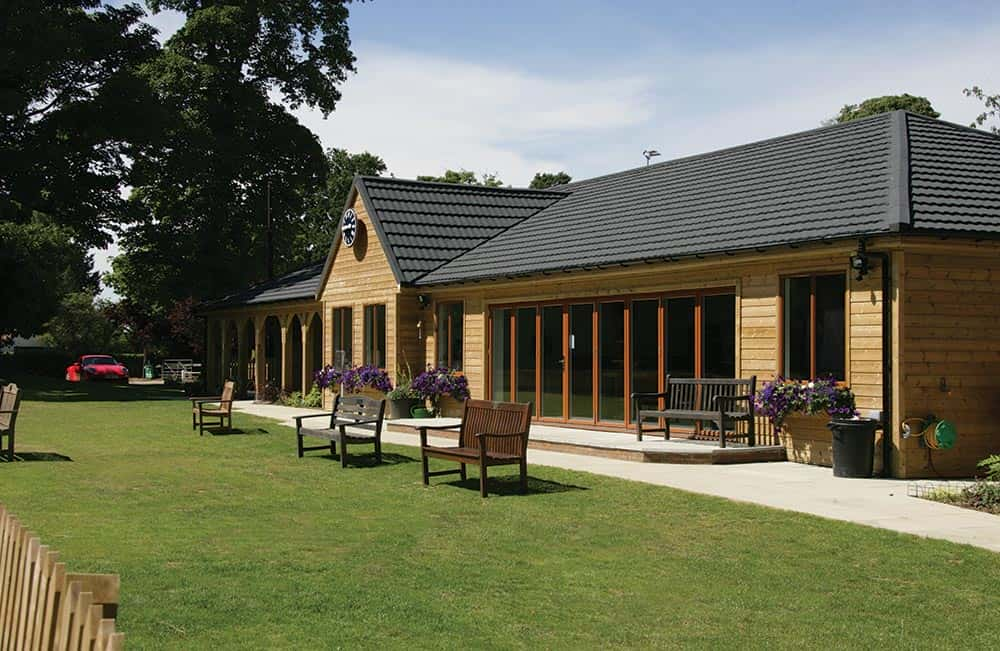A hipped roof refers to a roof style recognisable for having slopes on all four sides (typically of equal pitch) that meet at a ridge. In comparison, a barn hip (commonly known as a half hip roof) offers the benefit of a cutaway at one or both ends of the roof with a barn-style gable end.
Why choose a barn hip roof rather than a hipped roof?
The choice between a half-hip roof and a hipped roof depends on various factors such as architectural style, aesthetic preferences, structural considerations, and functional requirements. Let’s explore these characteristics in further detail:
Unique aesthetics
A barn hip roof combines elements of a gable roof and a hipped roof. It can offer a unique and interesting visual appeal, providing a slight departure from the traditional hipped or gable designs. In contrast, hipped roofs are often considered more traditional. They provide a classic and balanced look that is popular in many architectural styles. This unique aesthetic makes barn hip roofs a popular choice of American barn for unusual customer preferences.
Easier construction
Barn hip roof construction is often considered easier than the construction of full hipped roofs. This is due to the fact that they have fewer sloping surfaces and complex intersections, which can lead to slightly reduced construction costs and complexity compared to their full hipped cousins. This ease of construction is especially beneficial when building hay barns or barns equipped with barn doors for easy access.
Good wind resistance
While not as wind resistant as full hipped roofs, barn hip roofs still offer better wind resistance than many other roof styles. The shortened sloping sides can help mitigate some of the wind-related concerns. The same applies to drainage. While barn hips offer proficient drainage, a hipped roof with slopes on all sides will obviously offer slightly better efficiency. This can make all the difference if you live in an area with heavy rainfall or snowfall, particularly if you’re considering barn roof styles that need to withstand harsh weather conditions.
Reasonable loft space
A half hip roof will provide adequate storage or living space for most needs. However, the loft space might be slightly reduced compared to a full hipped roof as the inward slope of the sides allows for higher walls and more vertical space under the roof. This can be an important factor when planning for hay barn flooring and ensuring sufficient space for storage.
Practicality and design considerations
Sometimes there will be certain practical and design considerations that would accommodate a barn hip style roof better. For example, you may have a large tree on your land that slightly invades the area in which you want your structure to be. Choosing a barn hip style may provide the design flexibility you need to solve the problem. Additionally, barn hip roofs can be beneficial for heated barns in winter, providing better insulation and maintaining a comfortable temperature for livestock and storage.
You might consider a barn hip in order to allow more light to pass over the building and reduce the impact on your garden or neighbours. Likewise, if your local planning authority is concerned about the size and mass of your structure, a barn hip could be a compromise. For those with hay barns, this design can also improve ventilation, keeping stored hay dry and reducing the risk of mould.
Ultimately, the choice between a half/barn hip roof and a hipped roof comes down to your specific needs, preferences, and the architectural and aesthetic style you’re aiming for. It’s important to consider factors such as local building codes, climate conditions, budget constraints, and the overall design aesthetic you want to achieve for your building. Consulting with an architect or timber building specialist can help you make an informed decision that suits your project’s requirements.
By understanding these key differences and considerations, you can make the best choice for your next project, whether it’s for a hay barn, an American barn, a barn with barn doors, or any other type of barn structure.
The examples below show the difference between a hipped roof and a barn/half hip roof:
Hipped roof structures
Barn hip roof (half hip) structures
Primarily, a barn hip roof style offers a distinctive, elegant look but it does also provide several functional advantages.

Get in touch
Want to know more about choosing low-cost, high-quality stables? We’re happy to answer all your questions. Call 01233 740944, email info@nationalstables.co.uk or send us a message and we will respond ASAP.











